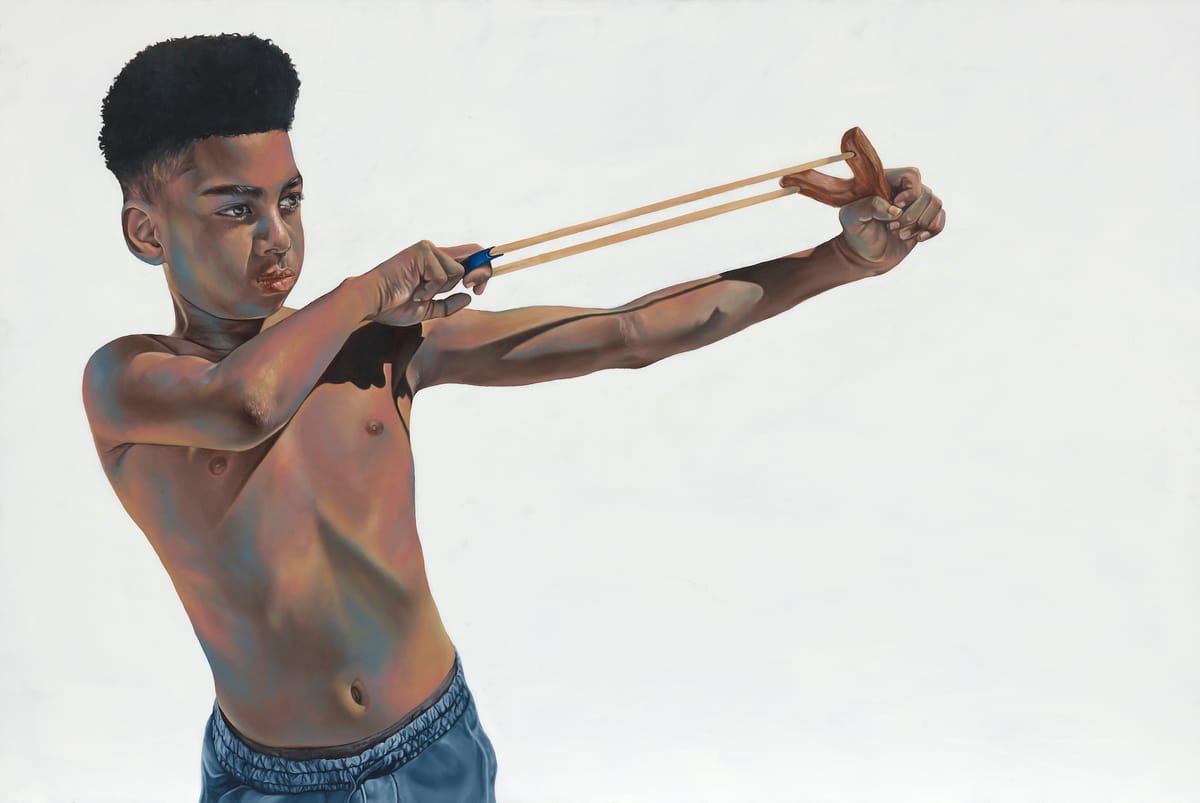A warren of art: Mid-America Fine Arts houses more than 700 artworks, many by Kansas artists
Les and Courtney Ruthven, retired psychologists by profession, have collected and sold art for more than half a century. They’ve appreciated it for even longer.
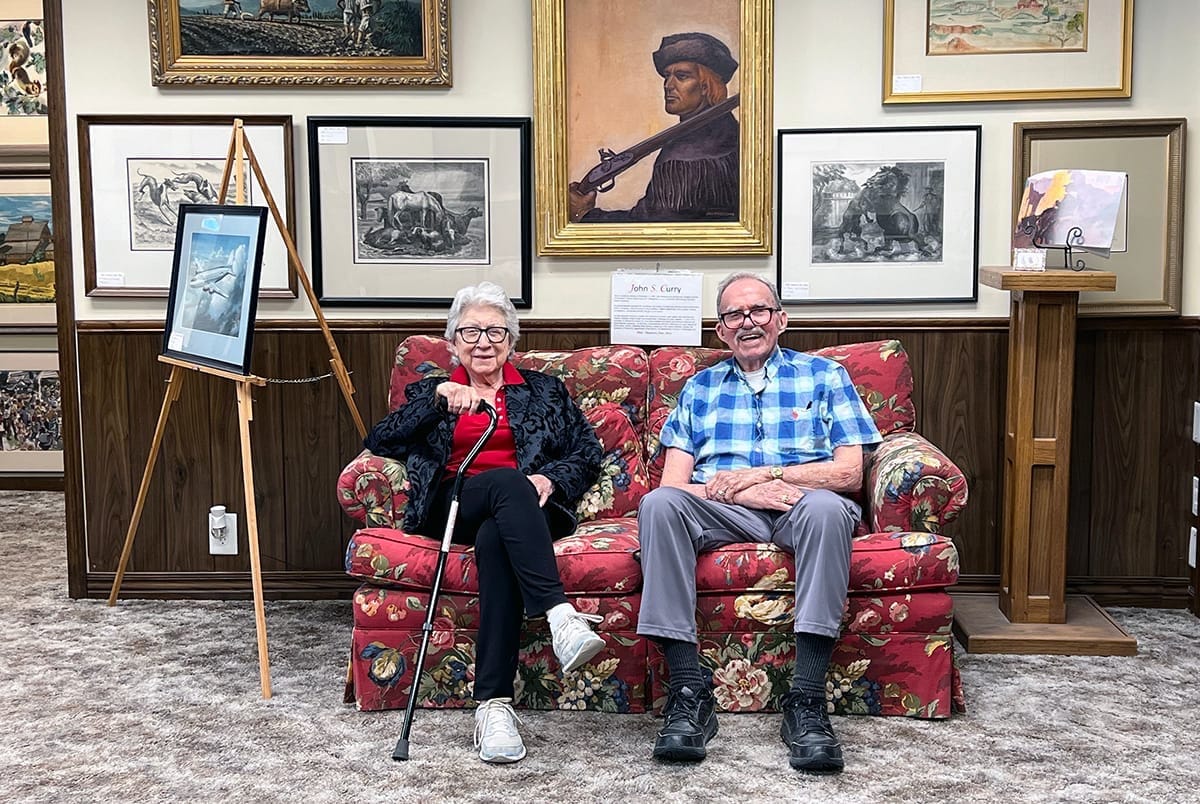
Visitors to Wichita’s Mid-America Fine Arts, at 2601 E. Central Ave., can get comfortably lost in the warren of hallways and rooms filled to the brim with art of nearly every description — with one exception.
“I’m not really an abstract person,” Courtney Ruthven says as she mentally surveys the art pieces she and her husband have spent decades collecting and, since 1973, selling out of various gallery spaces. “Well, I may be an abstract person,” she adds with a laugh, “but I’m not much of an abstract art person. What I like are more realistic representations of people and places I could have actually seen and things I could have done.”
Les Ruthven, too, gravitates toward representational art, not only as a collector and art dealer, but as an amateur artist himself. “I draw a little,” he says. He especially likes drawing the human figure and appreciates the artistry of those who can do that well. He declines to single out any favorite artwork in the gallery, saying that would be like choosing a favorite child — and he and Courtney have three grown children, all favorites. But he does share that one of the pieces that “stands out” to him is the portrait of a noblewoman by the 17th-century French artist Nicolas de Largillière that hangs in Courtney’s office. The painting is special to them, he says, because “whoever she was, she looks like Courtney’s mom.” It’s one of the few artworks not listed for sale and not by a mid-American artist.
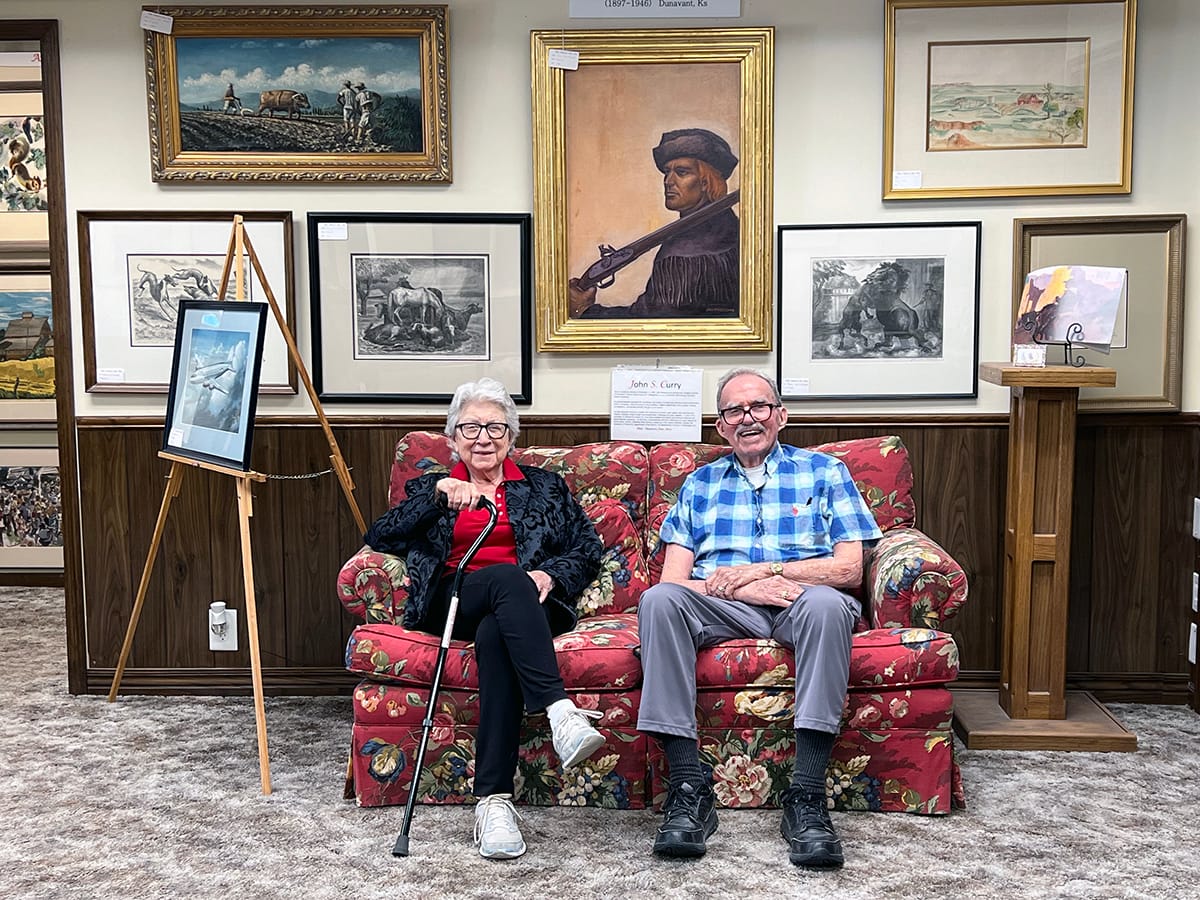
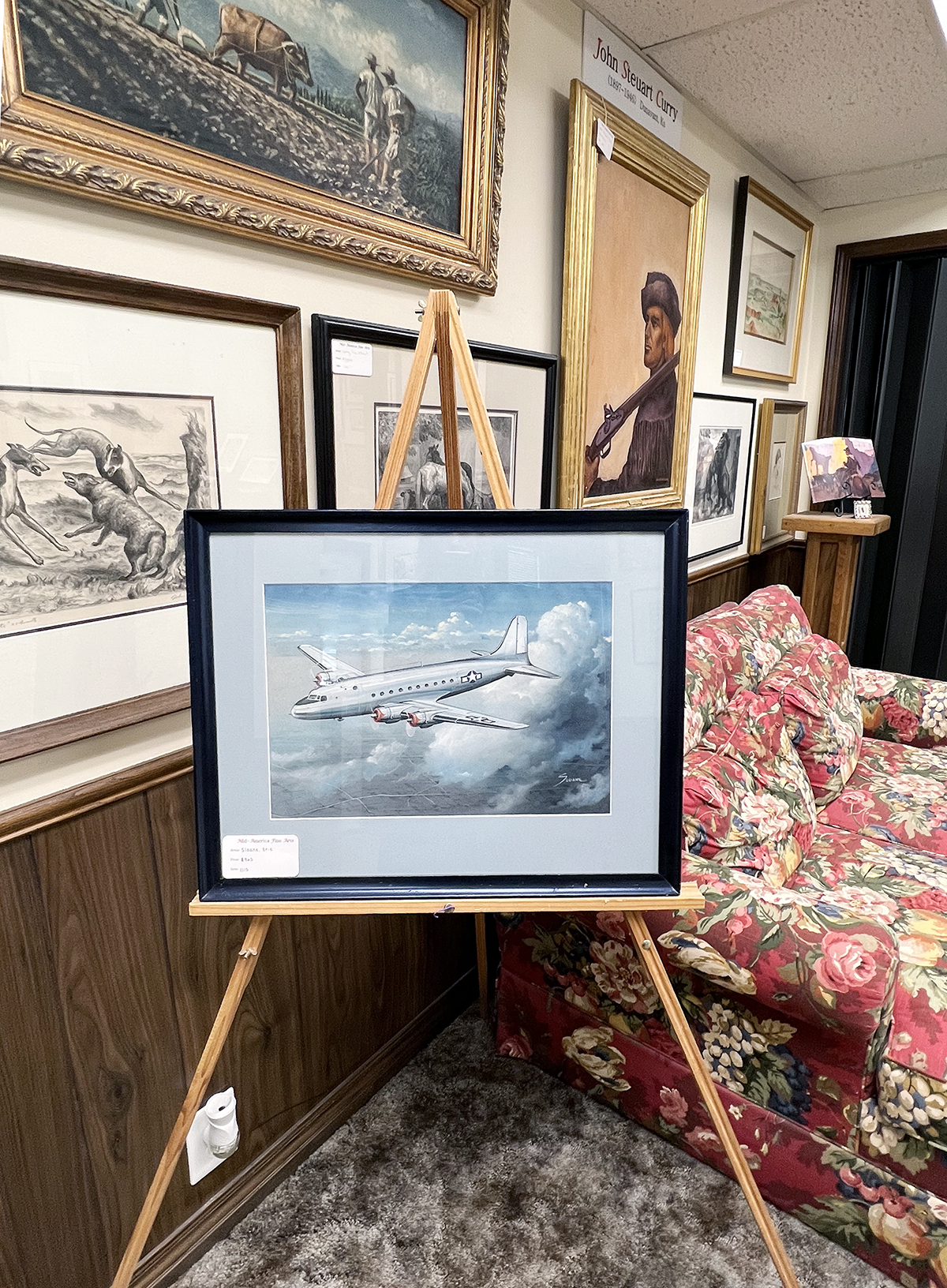
Left: Courtney and Les Ruthven in the front room of their gallery, seated in front of works by John Steuart Curry. Right: Eric Sloane, “Airplane,” watercolor on paper, 11 x 16 inches. Photos by Connie Kachel White for the SHOUT.
Currently taking pride of place in the gallery’s front room is Eric Sloane’s “Airplane.” Born in New York in 1905, Sloane, who died in 1985, was a landscape painter, illustrator, and author of illustrated books. His watercolor is displayed on an easel in front of a wall with no less than seven artworks (three lithographs, a pen and ink drawing, a watercolor, and two oils) by Kansas born John Steuart Curry (1897-1946), a prominent Regionalist artist who significantly influenced American art in the early 20th century. Best known for his depictions of rural life, Curry is famous — some Kansans would say infamous, Les notes — for his mural “Tragic Prelude,” commissioned for the state capitol building in Topeka. Featuring abolitionist John Brown, the mural is located on the east side of the second-floor rotunda.
Our free email newsletter is like having a friend who always knows what's happening
Get the scoop on Wichita’s arts & culture scene: events, news, artist opportunities, and more. Free, weekly & worth your while.
No spam. Unsubscribe anytime.
The gallery has works by so many artists, the Ruthvens have an online index from A (starting with James Allen) to Z (ending with William Zorach) that includes printmaker extraordinaire David Bernard and painters James Penney, Henri Clayton Staples, John Orth, and Rosemary Laughlin Bashar. Price tags range from several hundred on up to between $25,000 and $35,000 for works by such artists as Curry, Donald Roller Wilson, Bruce Moore, Henry Varnum Poor, and Phillip Pearlstein.
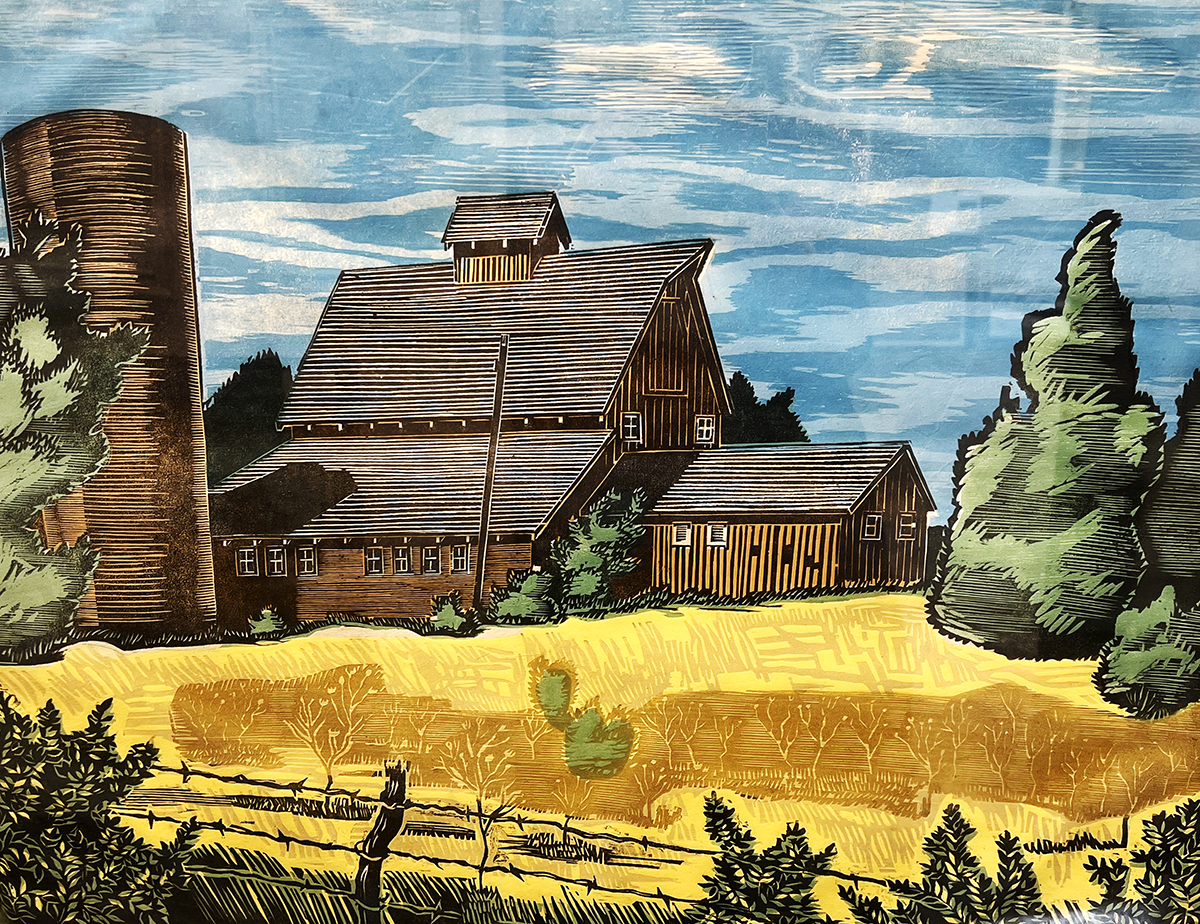
At first glance, the most abstract-looking art piece in the gallery is “October in the Woods,” an oil on canvas by John Edward Costigan (1888-1972) — or, as the Ruthvens call the Prairie Print Maker who hailed from Rhode Island, the “goat artist.” Take a second glance at Costigan’s painting and the man with his goat will clearly take shape among the trees. The gallery has 14 works by Costigan, including his etching “Cloudy Sky,” the watercolor “Figures in a Landscape,” and his drawing “Goats.”
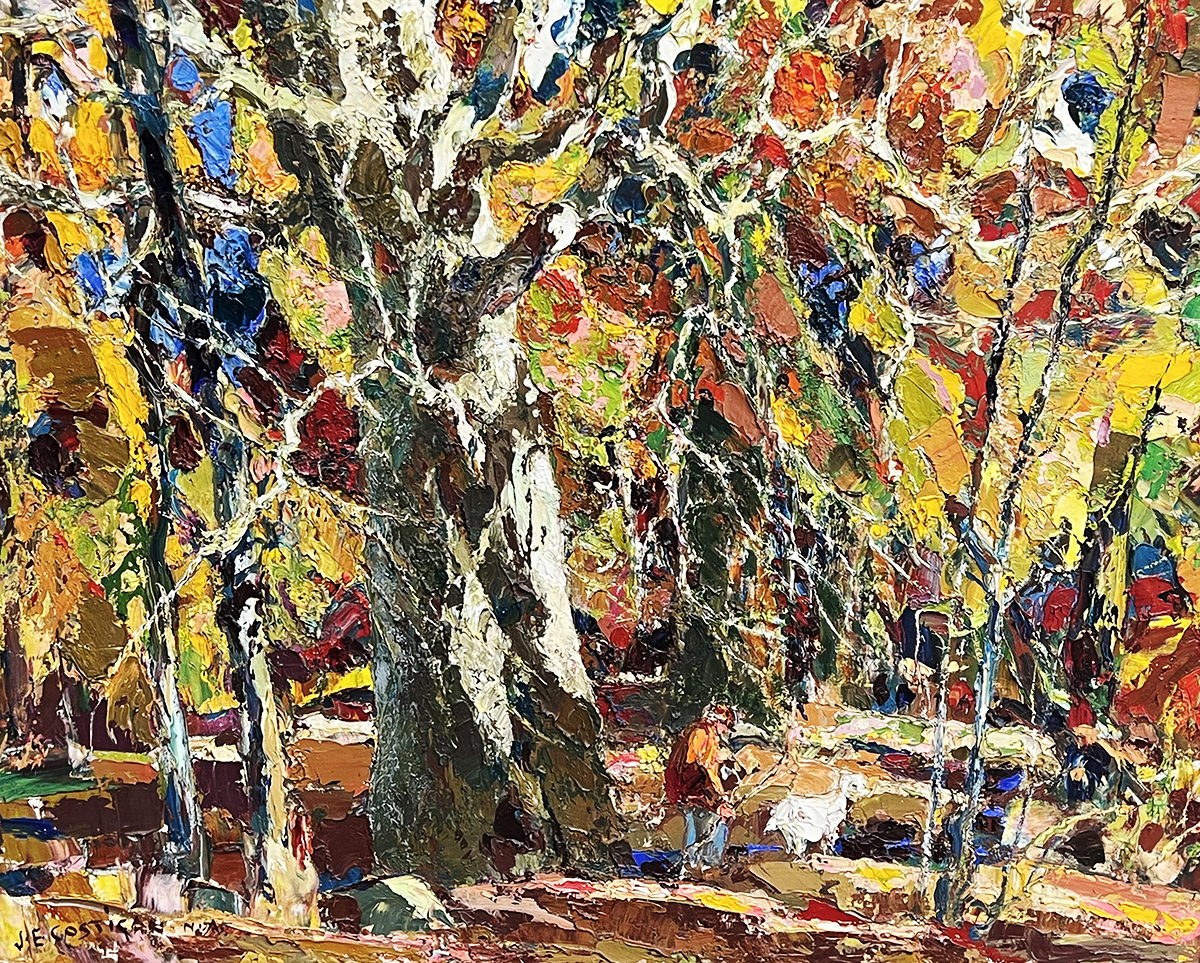
The Ruthvens and their son-in-law and art sales director Greg Moore, an aviation industry manufacturing analyst who retired from Textron in 2016 and joined Mid-America Fine Arts a year later, are proud to point out the wide range of works the gallery has of Prairie Print Makers, a Wichita-headquartered society of print artists and collectors active from 1930 to 1966. In addition to Costigan, some of the other artists represented in the gallery are Lloyd Foltz, Arthur Hall, Herschel Logan, and Birger Sandzén (1871-1954), a Swedish painter who produced most of his body of work while an art professor at Bethany College in Lindsborg, Kansas. The gallery’s collection of Sandzén pieces includes linoleum cuts, lithographs, oils, and the artist’s watercolor “Timberline Pines Pikes Peak 1923.”
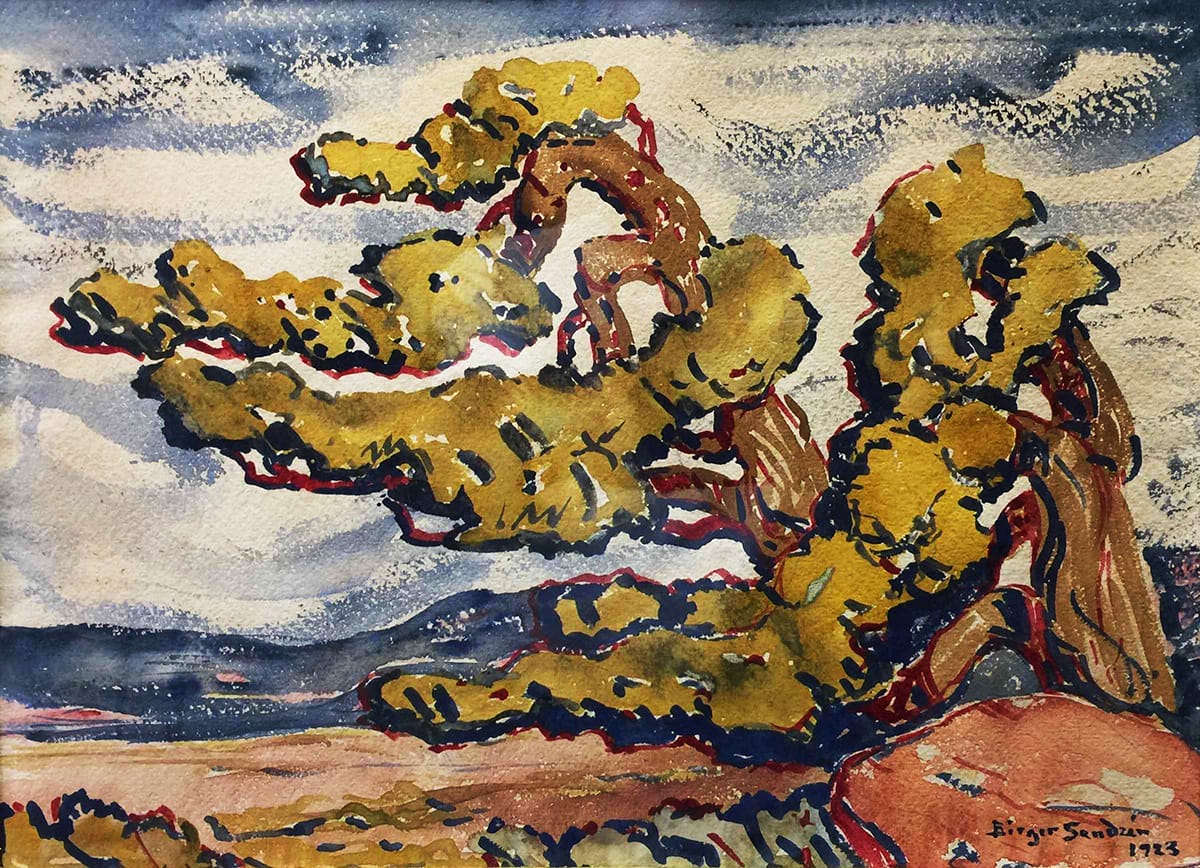
Birger Sandzén, “Timberline Pines Pikes Peak 1923,” watercolor on paper, 10 by 14 inches. Photo by Connie Kachel White for the SHOUT.
Les and Courtney’s appreciation of art began well before they met as psychology students at the University of Tennessee-Knoxville. Raised in Chattanooga, Courtney grew to love art from her mother, who had been drawing and painting since she was 14 years old. Les, who grew up in New York City, learned to appreciate artistic expression from his father, an amateur painter. “We would go to Central Park and he would paint,” Les says. “That’s how I was exposed to art.”
The Ruthvens moved to Wichita in 1965, after she earned a bachelor’s degree in psychology and he a doctorate in clinical psychology from the University of Tennessee in 1963, followed by an internship at the VA Psychiatric Hospital in Salisbury, North Carolina. As Les began private practice in Wichita, Courtney continued her education, graduating from Wichita State University with a master’s degree in 1972 and then, in 1974, from Oklahoma State University with a Ph.D. In 1987, they founded the national behavioral health management firm Preferred Mental Health Management. In the dedication of his 2005 book, Antidepressants: Science, Magic or Marketing, Les thanks his “wife-colleague” and writes, “Courtney, this Tennessee country gal with a giant intellect, among other assets, and this transplanted New Yorker began a very good thing together in the 1960s. We have shared much together since, probably more than many couples since we share a career in common.”
And art, of course. Now retired, the Ruthvens can concentrate fully on work at Mid-America Fine Arts, although they say they’ve never considered dealing with art as work on any level. “It’s just something we enjoy doing,” Courtney says, while Les adds, “Did you see the sculpture by Bruce Moore – “Nymph with Dolphin”? We have pottery, too…”
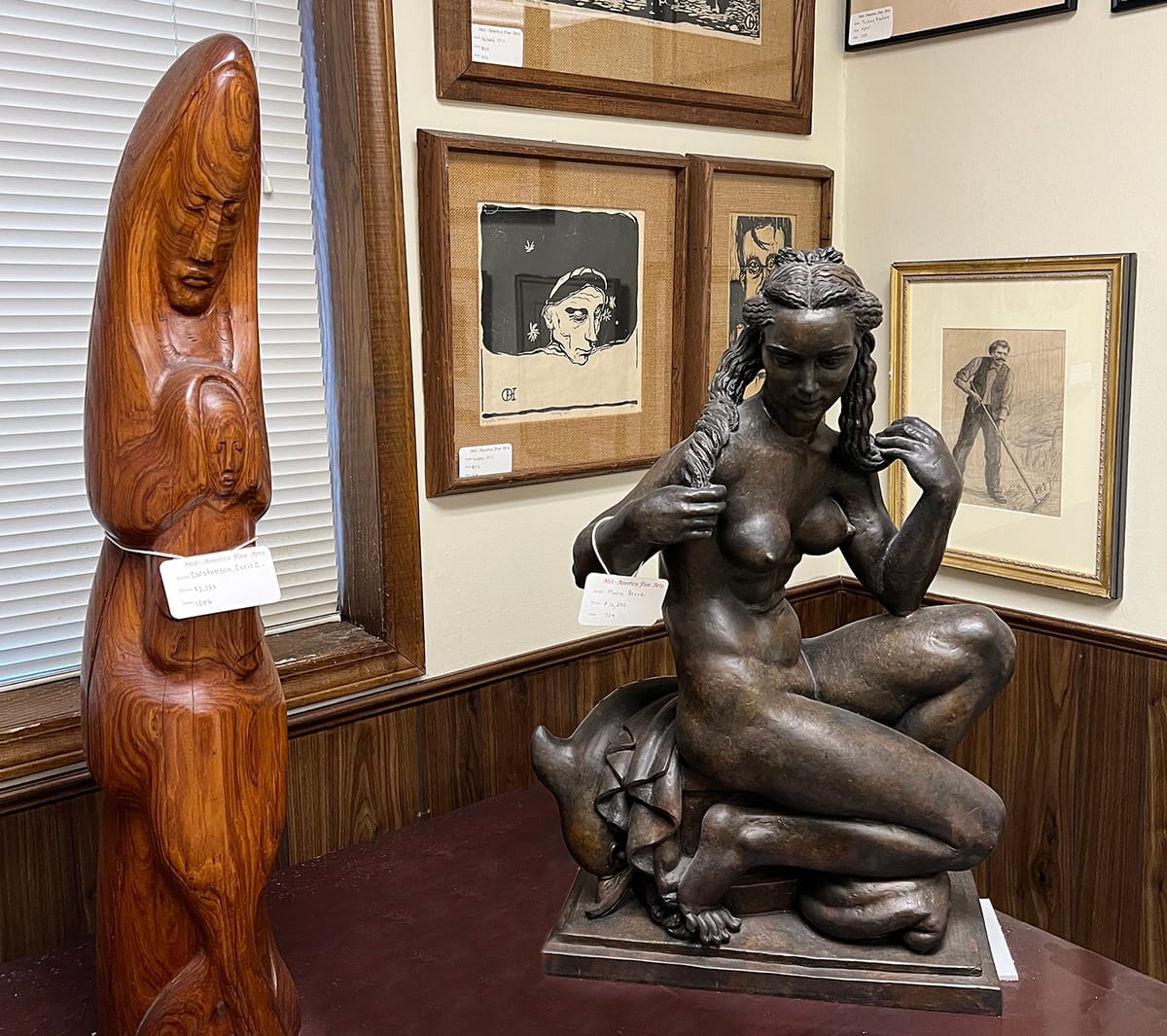
The Details
Mid-America Fine Arts
2601 E. Central Ave. in Wichita
The gallery is open from 8 a.m.-2 p.m. Monday through Friday. Visitors can make appointments outside these hours or shop the online collection.
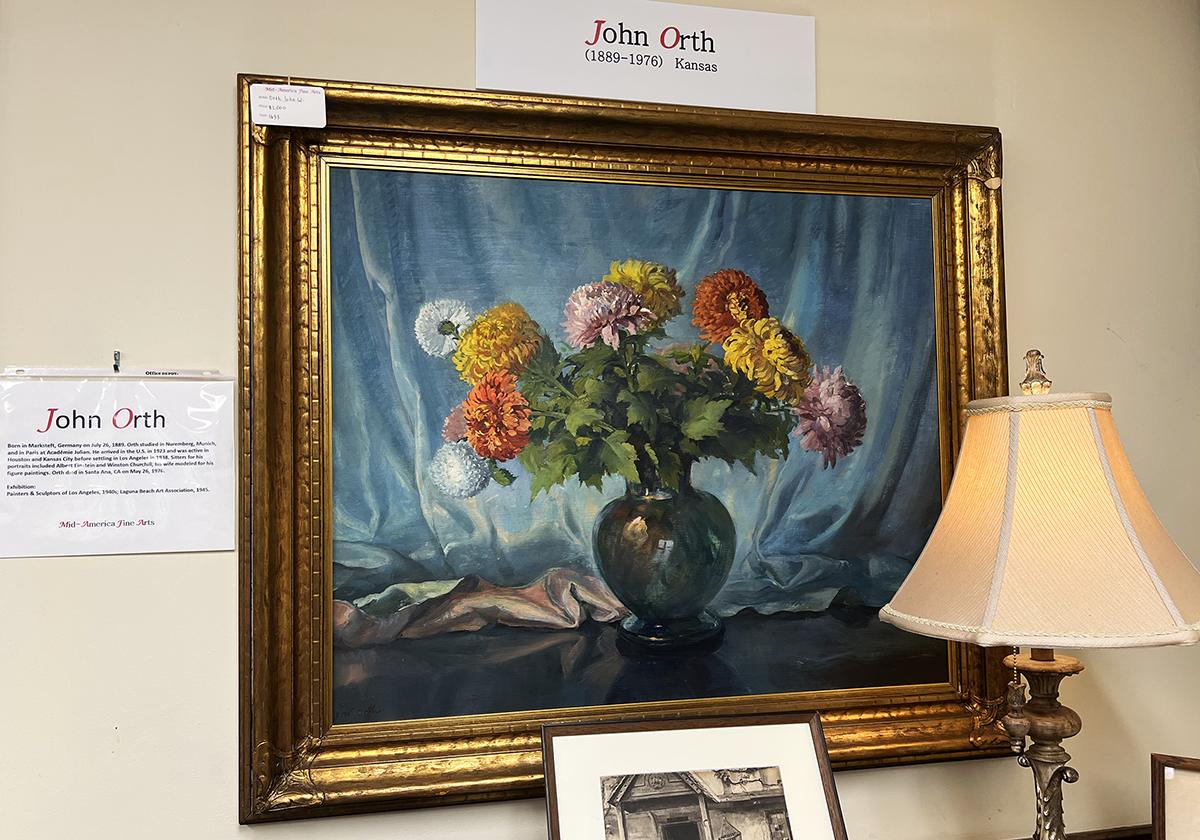
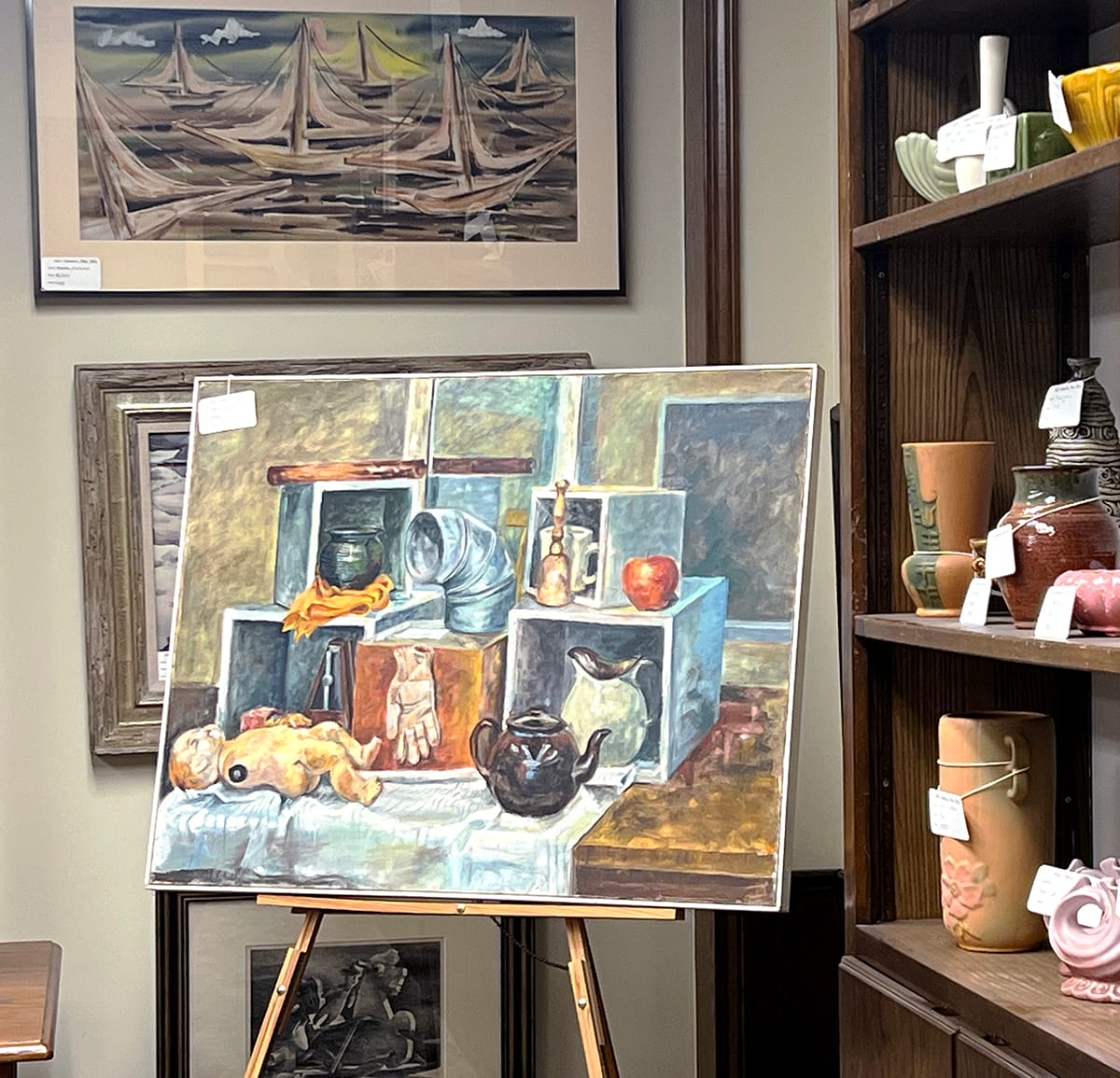
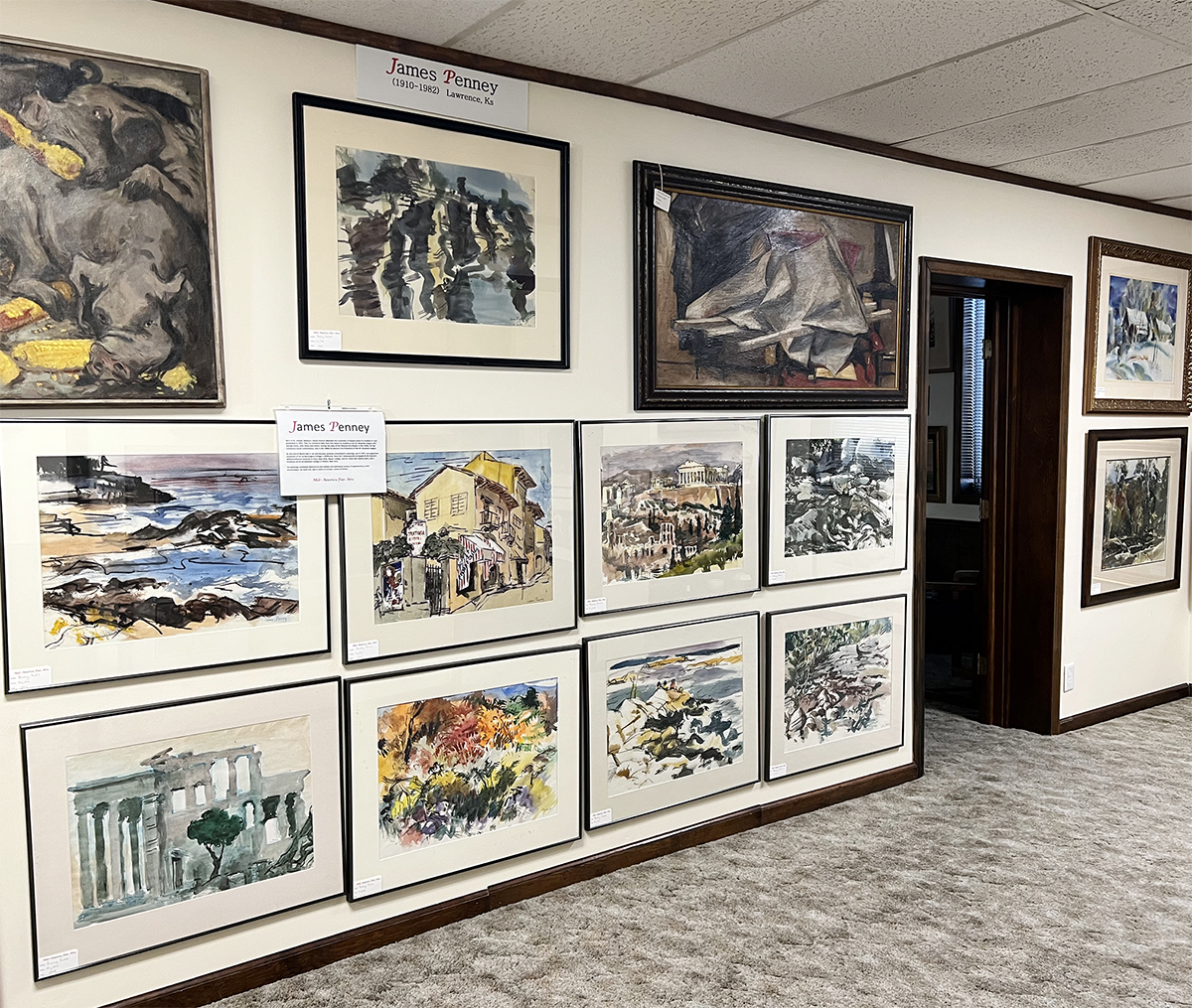
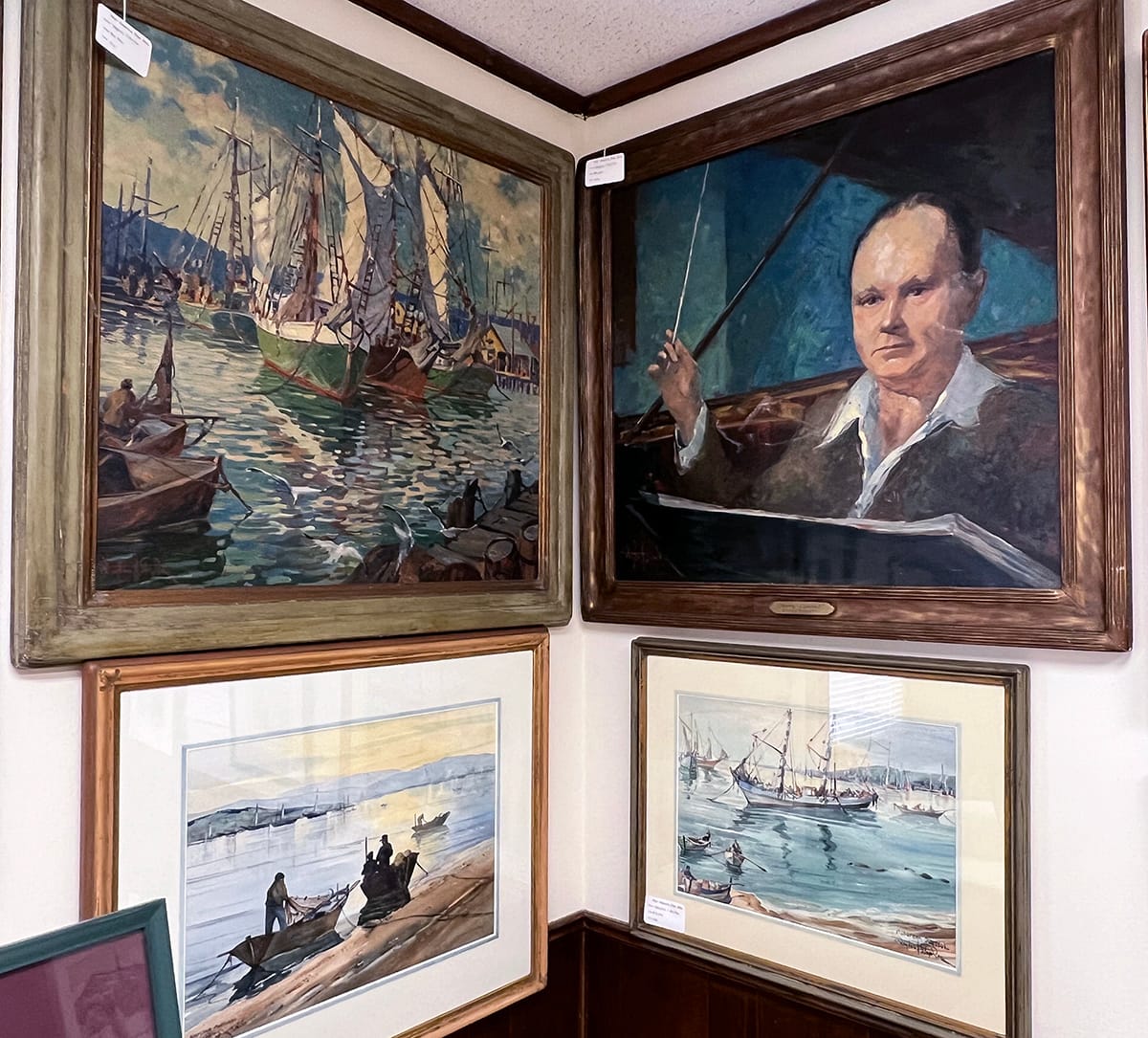
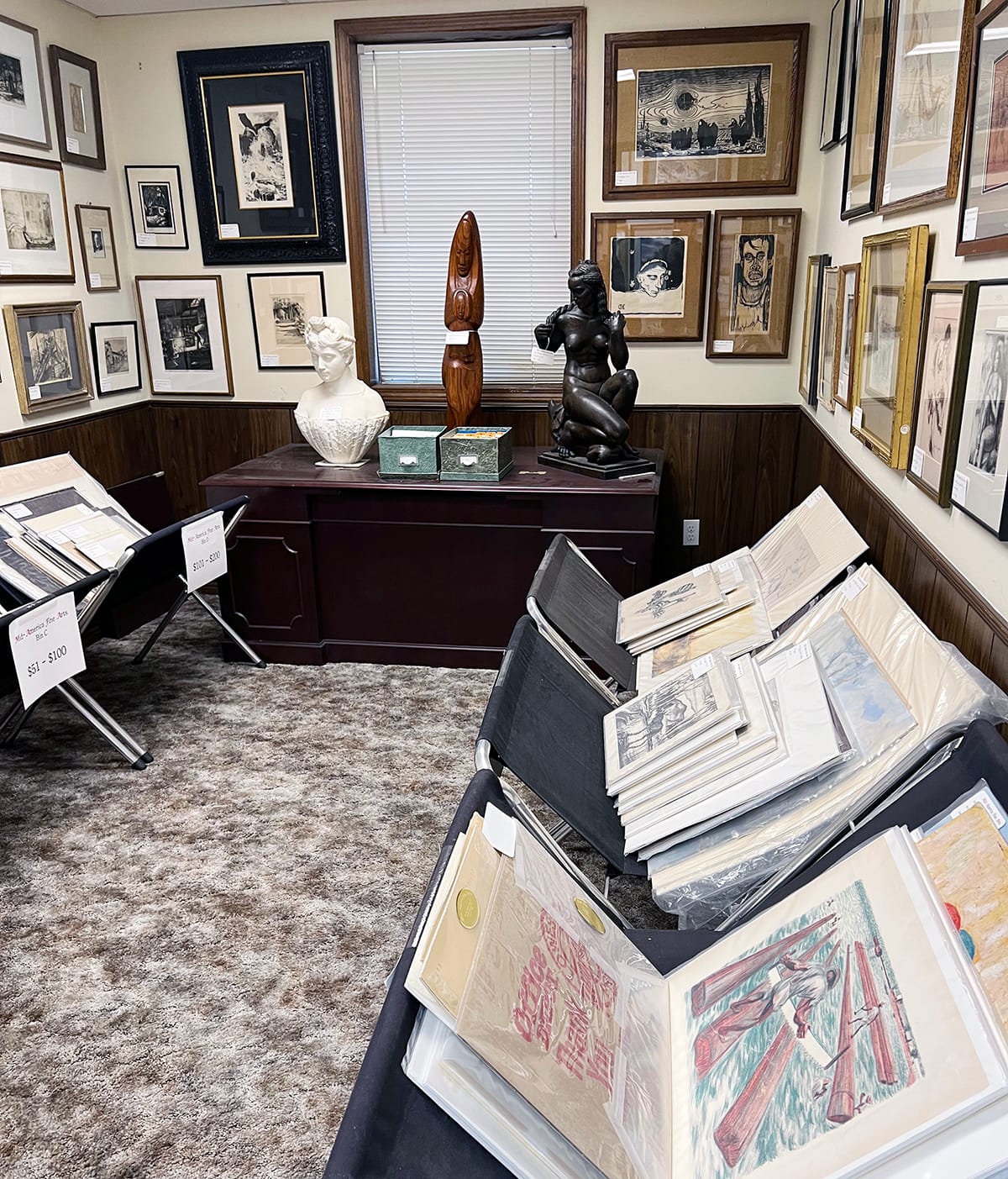
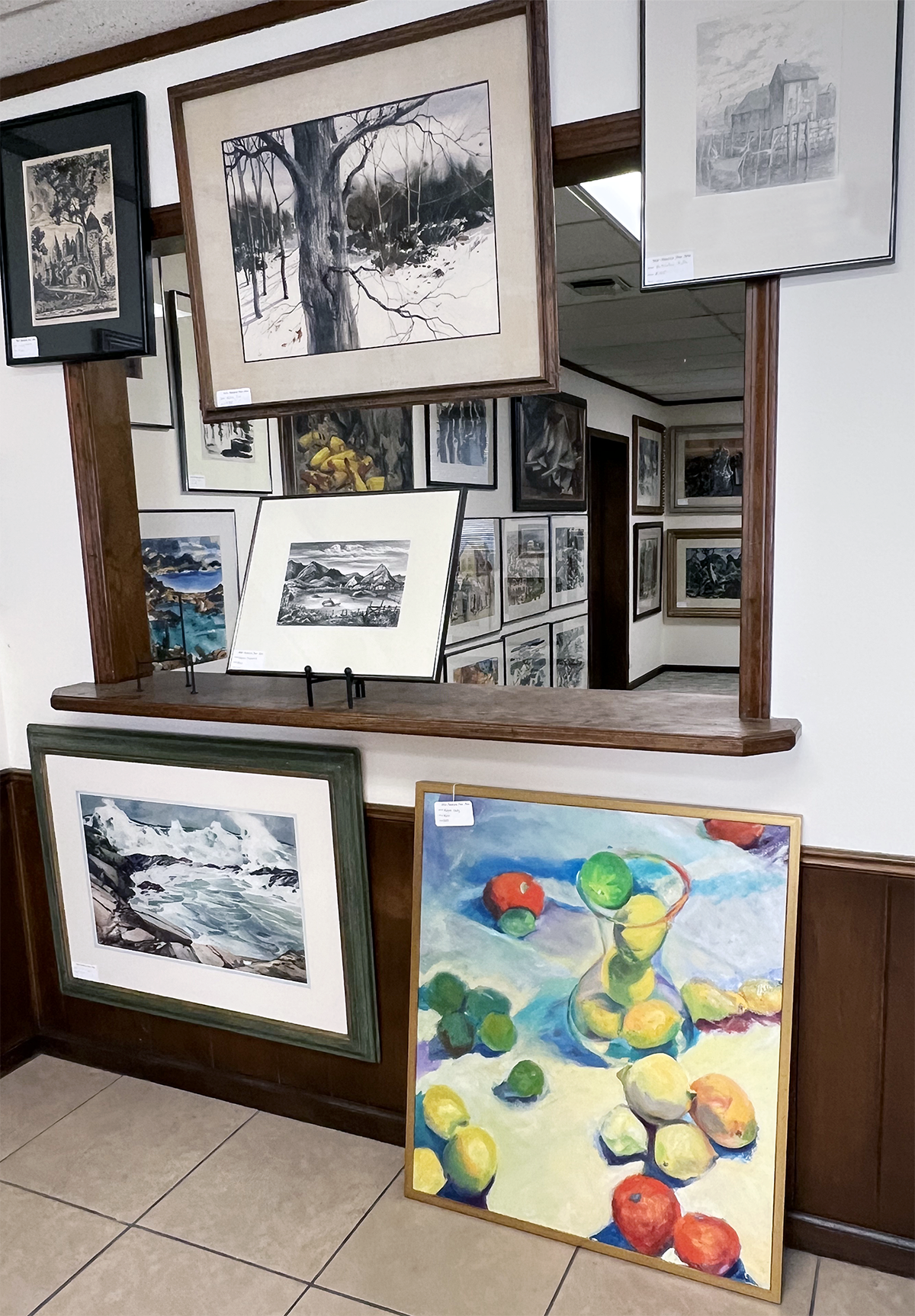
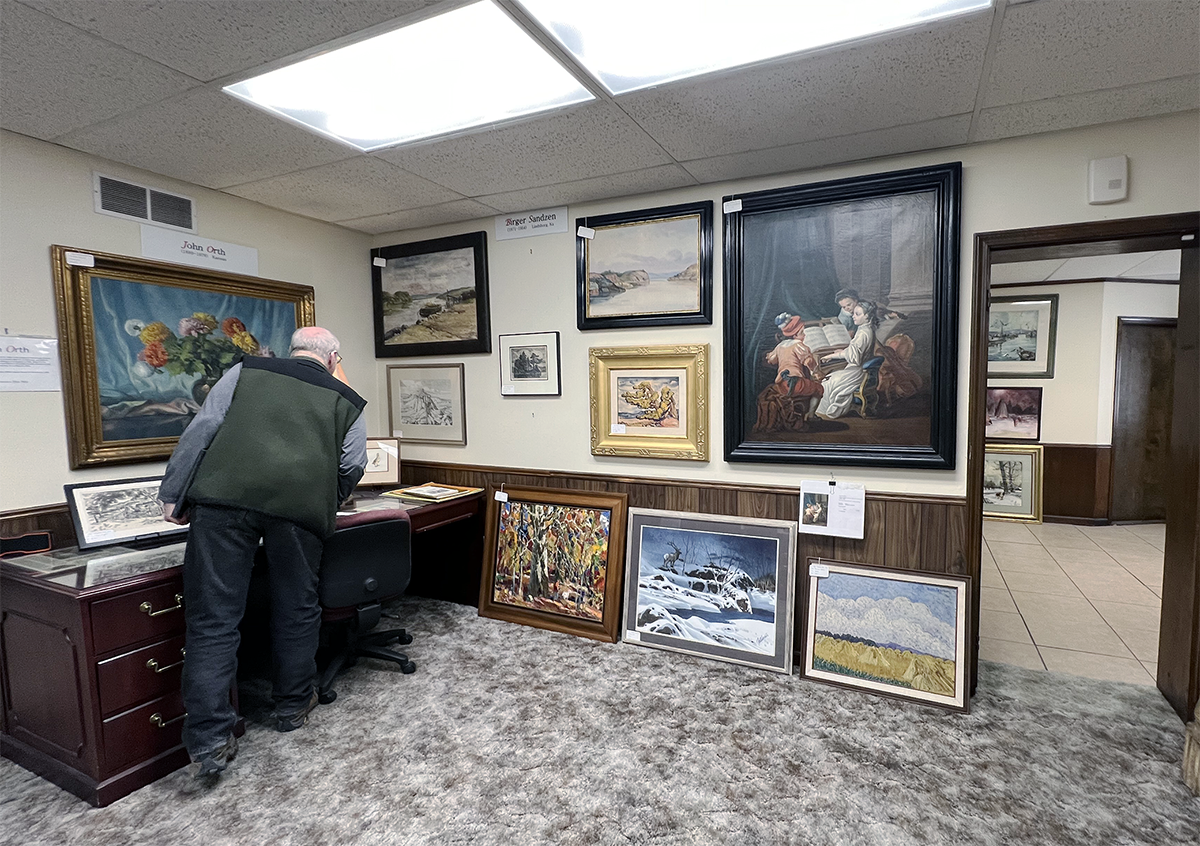
Views from the "warrens" at Mid-America Fine Arts, from top left: John Orth, “Still Life - Peonies with Backdrop,” oil on canvas, 29 by 35 inches. Rosemary Laughlin Bashor, “Mixed Still Life,” oil on canvas, 28 by 36 inches. Works by James Penney. Works by Henri Clayton Staples. Views of rooms at Mid-America Fine Arts. Photos by Connie Kachel White for the SHOUT.
Connie Kachel White is a writer and editor who has written about the arts in Wichita for going on three decades now. White, whose communications gigs range from book-editing to investigative reporting, is the founding and current editor of Wichita State University’s The Shocker magazine. More of her writing can be found online at theshockermagazine.com and shockerconnect.com.
Support Kansas arts writing
The SHOUT is a Wichita-based independent newsroom focused on artists living and working in Kansas. We're partly supported by the generosity of our readers, and every dollar we receive goes directly into the pocket of a contributing writer, editor, or photographer. Click here to support our work with a tax-deductible donation.
❋ Derby man has the kind of voice that turns heads — and chairs
❋ Socializing while sober: how some Wichitans are cultivating alcohol-free communities
❋ As a small creative business closes, the owner mourns
❋ Painting through it: Autumn Noire on 20 years of making art
❋ How a guy from Wichita resurrected 'Dawn of the Dead'
❋ Bygone Friends University museum housed curious collections
More visual arts coverage from the SHOUT
 The SHOUTTeri Mott
The SHOUTTeri Mott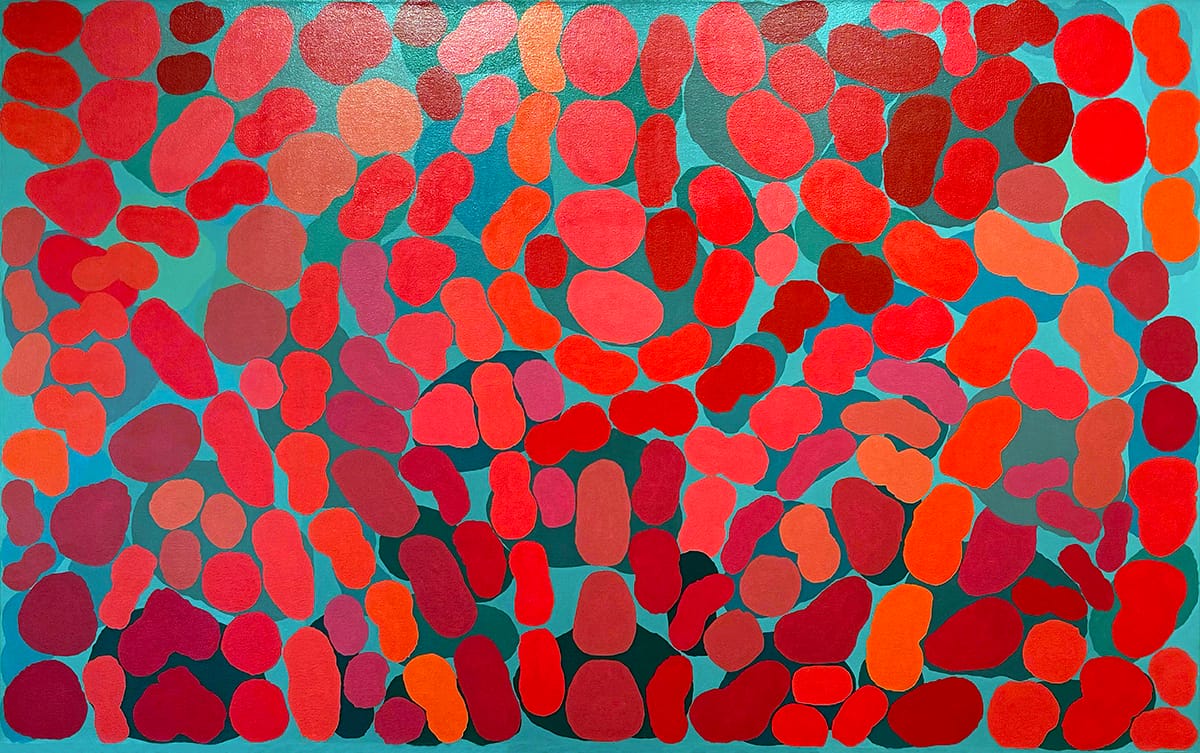
 The SHOUTOlivia D’Laine Schawe
The SHOUTOlivia D’Laine Schawe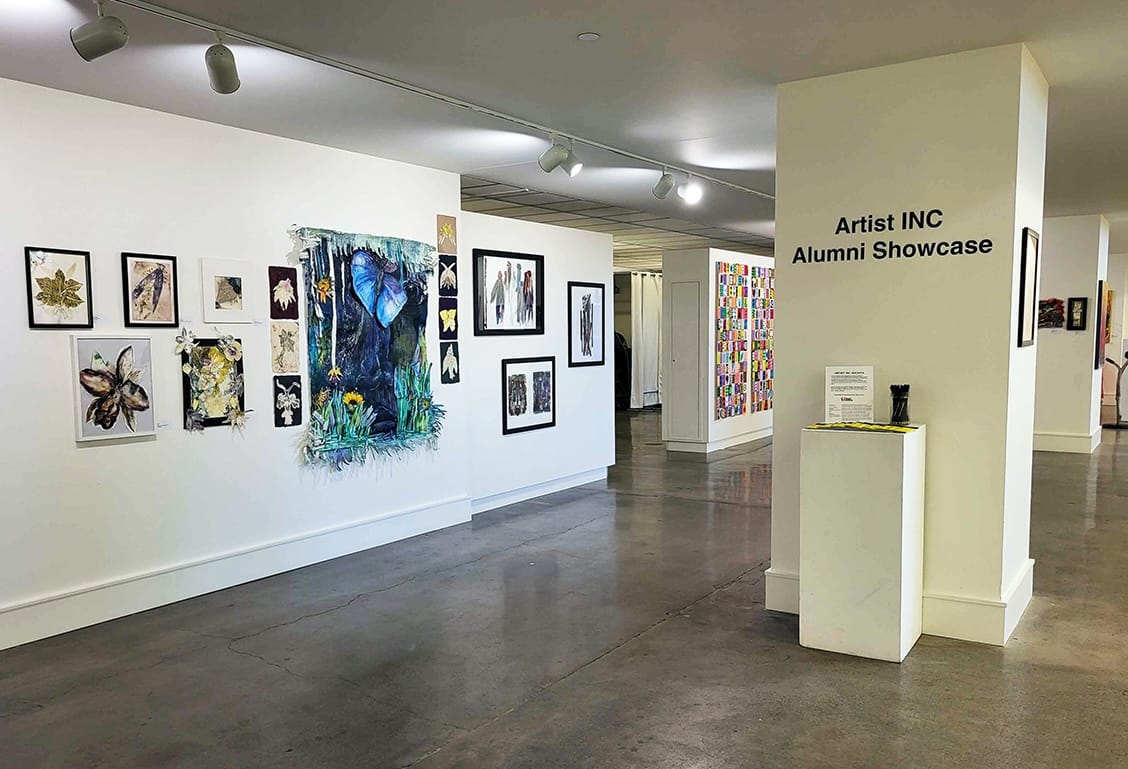
 The SHOUTSkyler Lovelace
The SHOUTSkyler Lovelace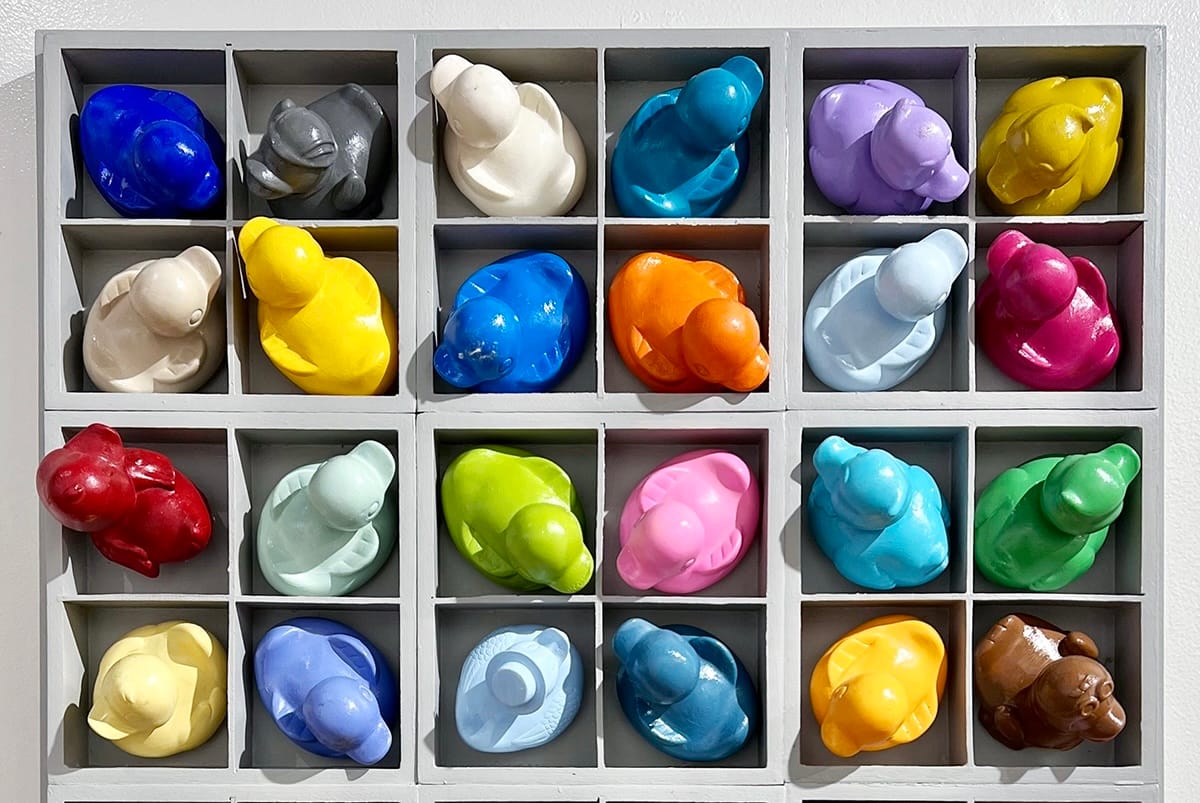
 The SHOUTJeromiah Taylor
The SHOUTJeromiah Taylor